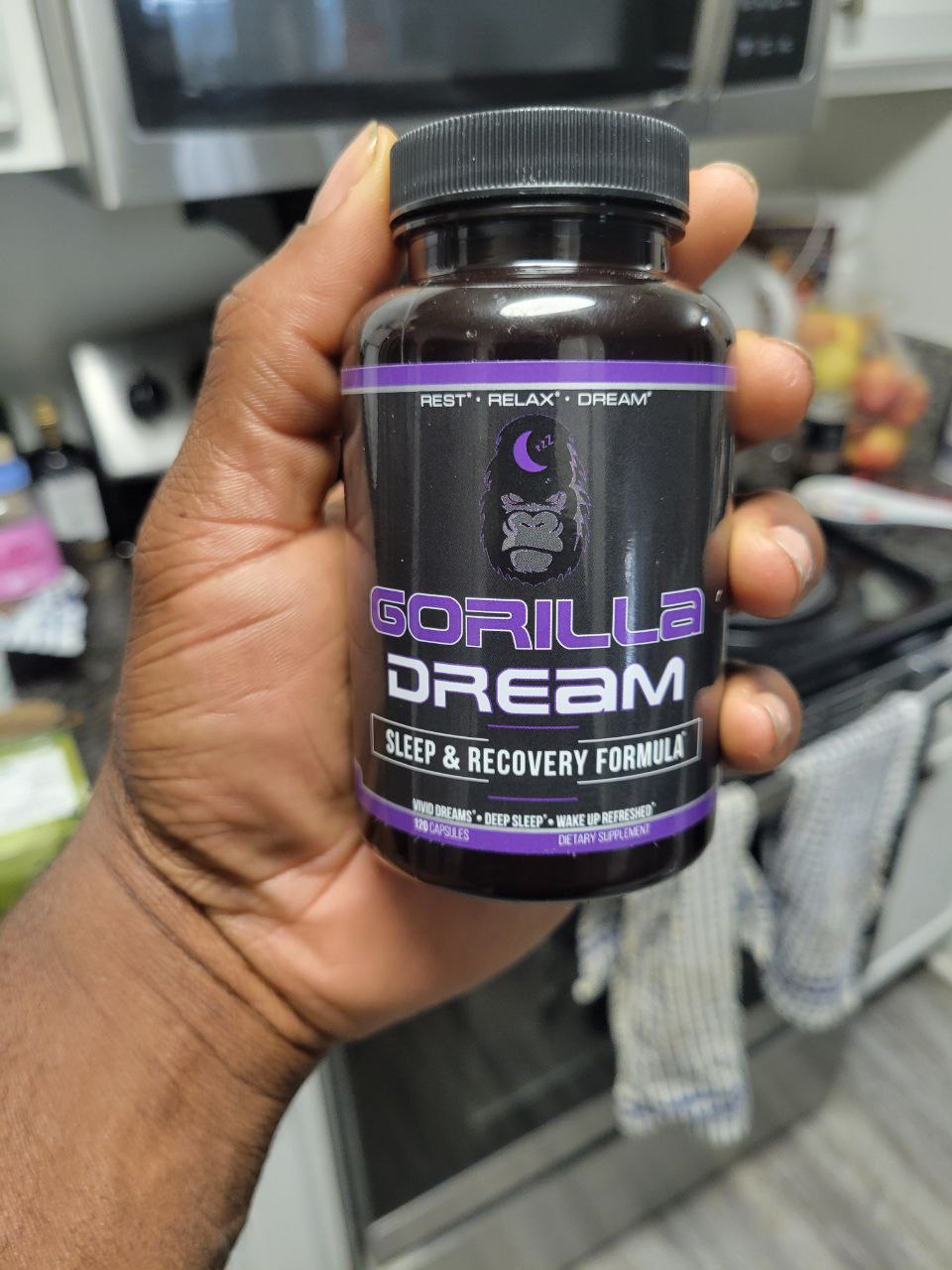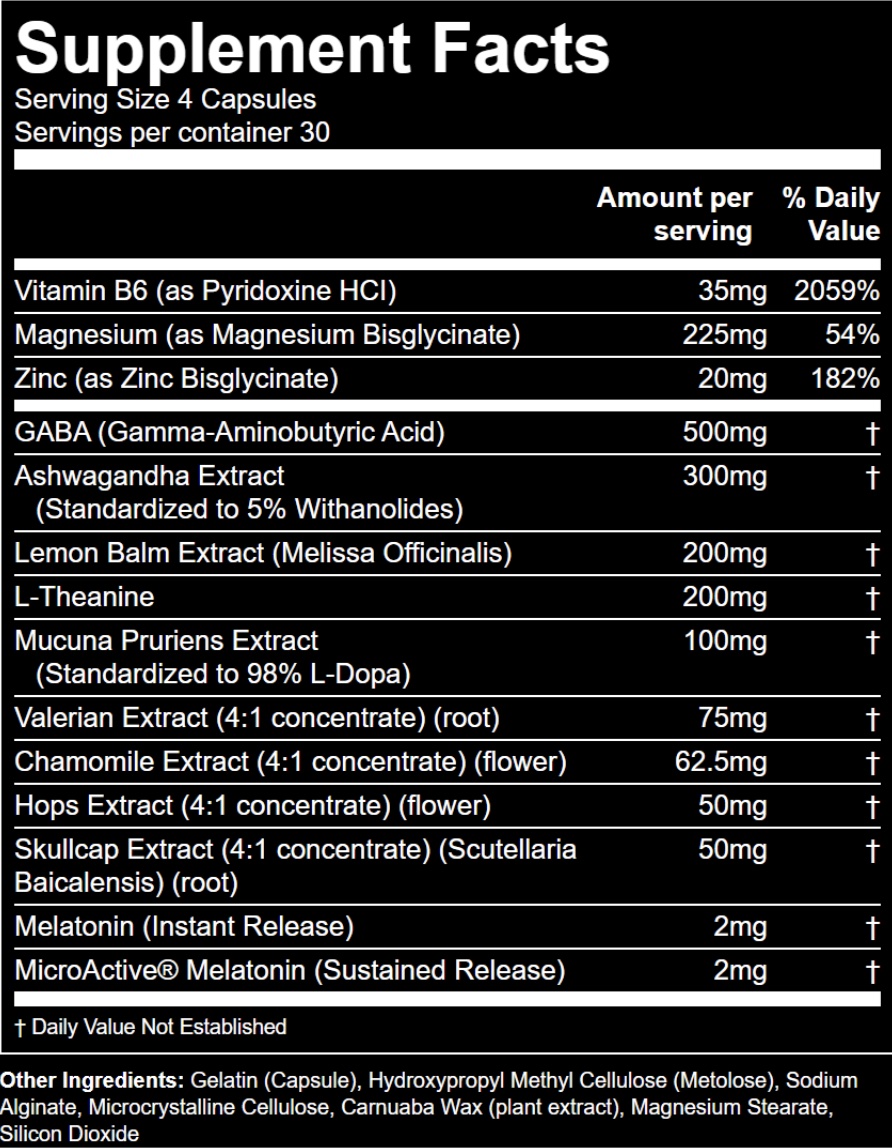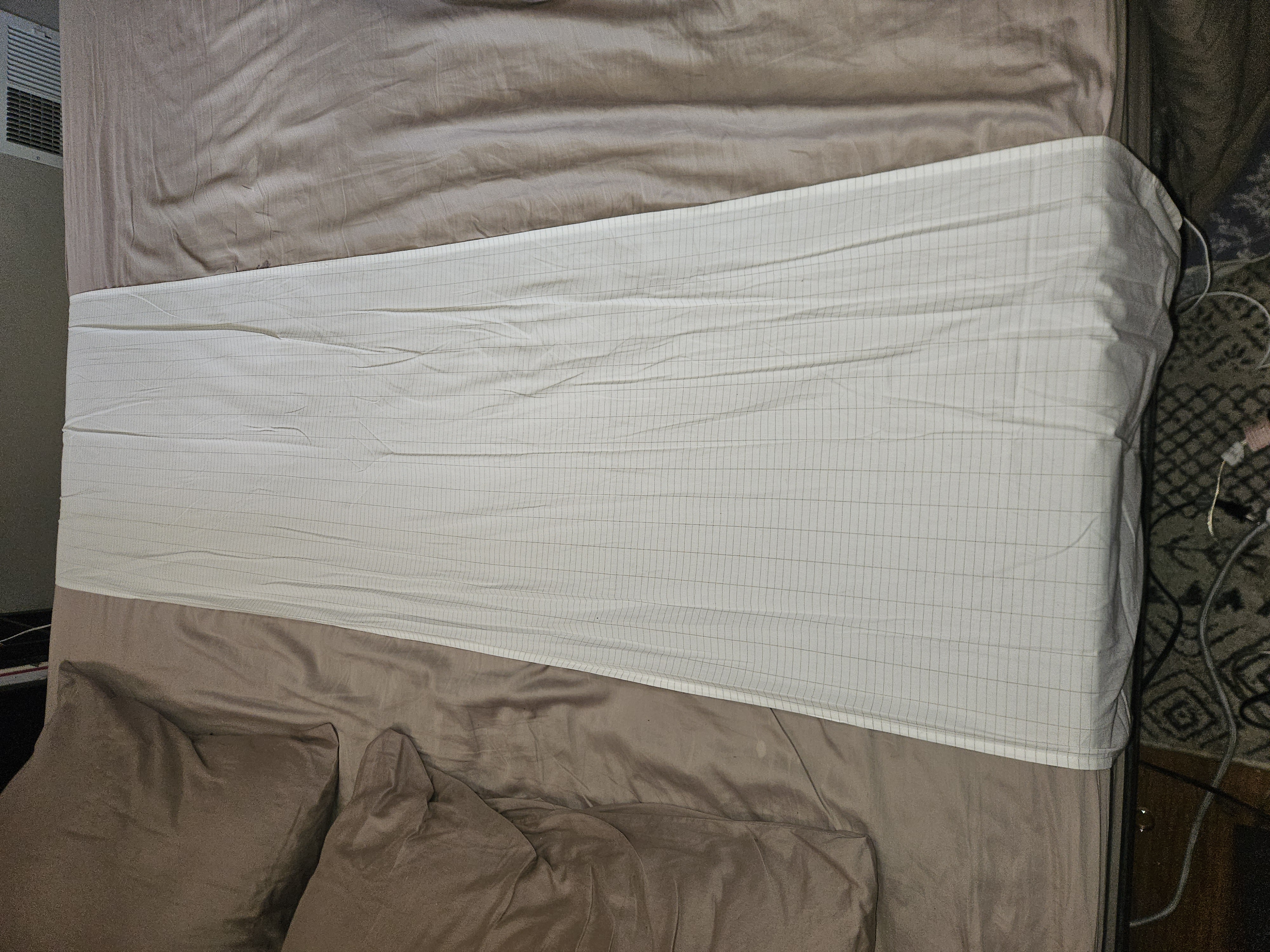Let me start by saying that relying on supplements to fall asleep each night is not a great idea. It’s just not smart to become reliant on a pill to do something your body is designed to do. If you have trouble sleeping, there are probably other areas of your life that you need to address first.
But if you’re already making an effort to live a healthy life and still struggle to fall asleep or wake up throughout the night, there are options available that can help. For those long stressful days or hard training sessions where sleep needs to be prioritized, I turn to Gorilla Dream.
Gorilla Dream is the premier sleep and recovery formula from the Gorilla Mind brand that makes some of my favorite supplements like the Gorilla Mode pre-workout and Gorilla Mind Smooth nootropic.
What makes Gorilla Dream special is that it features a potent blend of ingredients that help you sleep deeply, recover quickly, and even help you experience lucid dreams.
What to expect from Gorilla Dream
Before I begin, let me just state that this review is based on my personal experience and shouldn’t be taken as medical advice. Speak with a professional to see if it’s right for you.
Alright, let’s begin.

I take 2-4 capsules 20-30 minutes before bed, no more than 2-4 days per week. If I’m struggling to fall asleep, I may up my dose but never more than the recommended two servings. But like taking any sleep aid or dietary supplement, you should start with the minimum dose and never take more than what’s needed to achieve the desired effects.
Here’s what I experience after taking it, although your experience may vary:
Within 15 minutes: My eyes begin to feel heavy as the GABA, magnesium, melatonin, and chamomile start kicking in.
Within 30 minutes: I make sure that I’m in bed with the lights turned off so I can prepare for quickly falling asleep.
After 30 minutes: I’m sound asleep by this point, barring any interruption in my bedtime routine. I experience deep sleep and often will have lucid dreams that I can recall the next day.
After 6-8 hours: When it’s time to get up to start my next day, the effects of Gorilla Dream have fully worn off. I wake up refreshed with no signs of brain fog or sluggishness, ready to kick start my day. It’s that morning wakefulness and mental clarity that makes the product worth it.
Benefits
The main benefits I’ve discovered from supplementing with Gorilla Dream are falling asleep faster, recovering better after workouts, and experiencing vivid dreams.
Fall asleep quick
Gorilla Dream’s potent sleep induction blend of GABA, magnesium, melatonin, and chamomile tea extract helps you fall asleep quickly—like 30 minutes or less quick. Not only will it help you fall asleep quickly, but it also helps you stay asleep. Dialing in your sleep schedule to where you can get into a routine is a great way to start your day earlier so you can get more done.
Better recovery
The sports world has a common saying that strength doesn’t start in the gym; instead, it starts in the kitchen and bedroom. You can hit the gym as hard as you want, but if you aren’t giving your body the proper fuel and time to recover, you’ll stunt your gains and risk injury.
It’s common sense, but better sleep means better recovery. Even as I’ve gotten older, I still choose to train hard, but I put a lot more emphasis on my recovery routine. Supplementing with Gorilla Dream has helped me achieve the best sleep where I wake up feeling refreshed and ready to hit it hard again.
Lucid dreams
Although it’s not the main reason I take it, an interesting side effect of Gorilla Dream is getting to occasionally experience lucid dreams throughout the night. On the days I take it, I certainly seem to remember my dreams more vividly, which is a good sign that I’m achieving deeper sleep. Waking up and recollecting my dreams in detail also seems to help me stay creative, although there’s no way for me to prove it.
Drawbacks
While I haven’t experienced any drawbacks from the product, each person is likely to have a different experience.
Possible side effects
Taking any supplement, including Gorilla Dream, may cause you to experience side effects—good and bad. Those potential negative side effects include brain fog, drowsiness, rapid heart rate, and headaches. If you experience any of these, it’s best to stop taking it right away. Also, be smart, follow the recommended dose, and never take it with other sleep aids, alcohol, or other medications.
Get Gorilla Dream here (I get a small % cut of each sale made through the link, which helps pay my bills).
Gorilla Dream ingredients
A big reason why I’m a proponent of the Gorilla Mind product line is their transparency about what goes into their products. And since I’m strict about what I put in my body, I only take what I recognize and know is healthy for me.
Here’s the list of workout ingredients found in Gorilla Dream:
I’ve also included a short explanation of what each ingredient does—though I encourage you to do your research. Examine is a trusted resource for learning more about each ingredient.
- Vitamin B6: Also known as pyridoxine, Vitamin B6 is a water-soluble vitamin essential for normal brain development and keeping the nervous system and immune system healthy.
- Magnesium: An essential dietary mineral that helps promote muscle relaxation so you can fall asleep quicker.
- Zinc: An essential mineral that has been shown to support optimal testosterone levels, which can help with muscle recovery and growth.
- GABA: A neurotransmitter that regulates many depressive and sedative actions in your brain to help reduce stress and relax the mind.
- Ashwagandha extract: An herb best known for its anxiolytic (anti-anxiety) and stress-relieving effects. Ashwagandha has also been shown to improve total sleep time and quality in people with and without insomnia.
- Lemon balm extract: An herb traditionally used for various cognitive purposes such as improving cognition and reducing stress and anxiety. It is said to calm the nerves and relax the body.
- L-Theanine: A non-protein amino acid that reduces anxiety and stress, promotes relaxation, and improves sleep quality by promoting a more relaxed state.
- Mucuna Pruriens extract: Also known as Velvet Bean, it is an excellent source of the amino acid L-dopa, which has been shown to increase dopamine levels and help reduce stress.
- Valerian extract: An herbal tea derived from valerian root that’s commonly used as a sleep remedy due to its sedative and anxiety-reducing effects. It is also thought to enhance your body’s GABA neurotransmission.
- Chamomile extract: Another popular herbal tea derived from the chamomile root that’s commonly used as a sleep aid due to its anxiety-reducing effects caused by the high concentration of the bio flavonoid apigenin.
- Hops extract: The dried, flowering part of the hop plant commonly used to treat anxiety, sleep disorders, and restlessness, although evidence of its effectiveness is weak.
- Skullcap extract: Scutellaria baicalensis, or Chinese Skullcap, is a traditional Chinese medicine commonly used for cardiovascular and cognitive health and increasing longevity.
- Melatonin: A neurohormone secreted by the pineal gland in the brain that your body uses to help you fall asleep.
- MicroActive® melatonin: A lab-developed melatonin formula that uses a micronized, sustained-release technology that releases melatonin gradually over 7 hours to provide a longer, more-consistent sleep.
How it compares to other sleep aids
Sleep aids and supplements ranging from CBD oil, THC-infused gummies, and melatonin have grown in popularity in recent years. Knowing which product is right for you and will work as advertised can be quite overwhelming. There’s also a lot of BS products out there to wade through.
To help you out, here’s how Gorilla Mode performs against some popular sleep aids on the market.
Delta-8
Delta-8 THC is a psychoactive substance found in small traces in cannabis and is less psychoactive than delta-9 THC, most commonly associated with getting high. Like delta-9 THC, delta-8 produces similar feelings of euphoria, relaxation, and potential pain relief, but not as overwhelming.
Because its effects are considered to be mild, delta-8-infused gummies and serums have become a popular sleep aid remedy.
One of the popular brands that I’ve used and trust is Exhale Wellness Delta-8 gummies. They do a good job of helping you relax at the end of the day but at $60-100 per bottle, it’s not the most affordable option. Some people also report experiencing side effects like grogginess and nervousness from taking delta-8-based products, so do your research beforehand.
Impossible Sleep
Impossible Sleep is a natural sleep and recovery drink designed for athletes and ultra performers. Impossible Sleep’s blended formula of magnesium, l-theanine, and stevia extract is designed to be a straightforward sleep aid to help you fall asleep quickly and recover deeply.
I appreciate that Impossible Sleep is a simple, no-BS supplement that doesn’t pump their product with a bunch of filler. Besides just the honed-down formula, Impossible Sleep has a bit more magnesium per serving (350mg vs 225mg) than Gorilla Dream but uses Magnesium Citrate instead of Magnesium Bisglycinate that’s found in Gorilla Dream. Both forms of Magnesium have been shown to absorb well, with Magnesium Citrate having marginally better bioavailability.
Frequently asked questions
Before I try any new sleep supplement or product, I always do my research to ensure it makes sense to take. Here are some common questions I get about Gorilla Dream so you can make your own decisions about whether or not it’s right for you.
What are the side effects of Gorilla Dream?
I haven’t experienced any side effects from taking the recommended dose. The only time I had a slightly negative experience was after taking more than the recommended dose for personal experimentation, which led to grogginess and brain fog in the morning. Ironically, it was a similar experience to being sleep-deprived.
How long does Gorilla Dream take to work?
I start to feel the effects within 15-20 minutes, but your experience may vary. Regardless of how you may feel after taking it, it’s still recommended to get in bed at least 30 minutes after taking it since the sleep formula is still working behind the scenes. Some nights I can feel the drowsiness slowly coming on, and other nights I’m out like a light.
Is Gorilla Dream safe?
Gorilla Dream is safe if you don’t exceed the daily serving size of 8 capsules. Most ingredients are 100% natural and have been tested in numerous studies. I do prefer to occasionally cycle off of it, though, just so there’s no risk of developing resistance from taking a sleeping aid where it interferes with my ability to fall asleep without it.
Final thoughts
Sleep, along with diet and exercise, is the bedrock to living an optimal life. There’s simply no substitute for a great night’s sleep. Poor sleep, or lack of it, can cause brain fog, fatigue, poor memory, low energy levels, and just wreck the quality of your life.
If you struggle to fall asleep after making an effort to exercise and eat well, then Gorilla Dream might be what you’re looking for. It’s non-habit forming and will help you fall asleep quickly so you can dominate your day.
Try Gorilla Dream here (I get a small % cut of each sale made through the link, which helps pay my bills).





